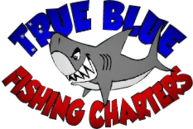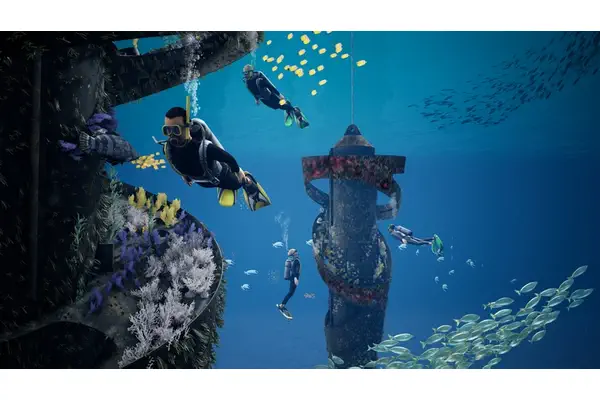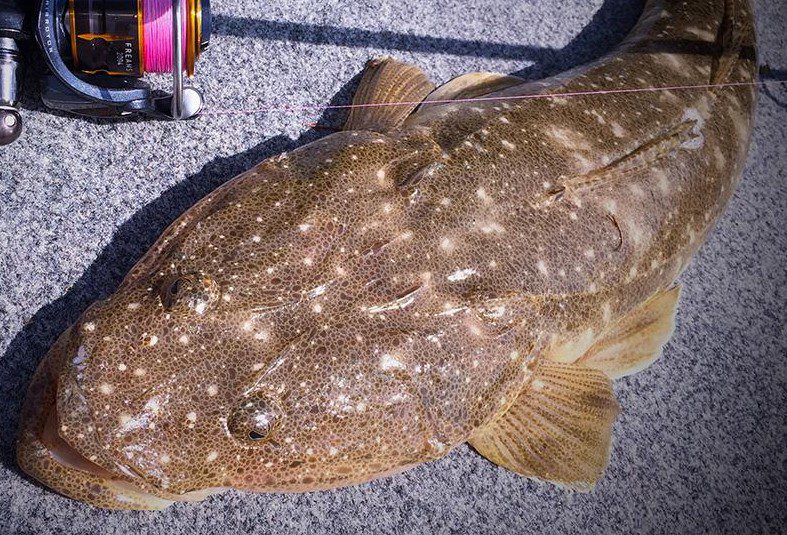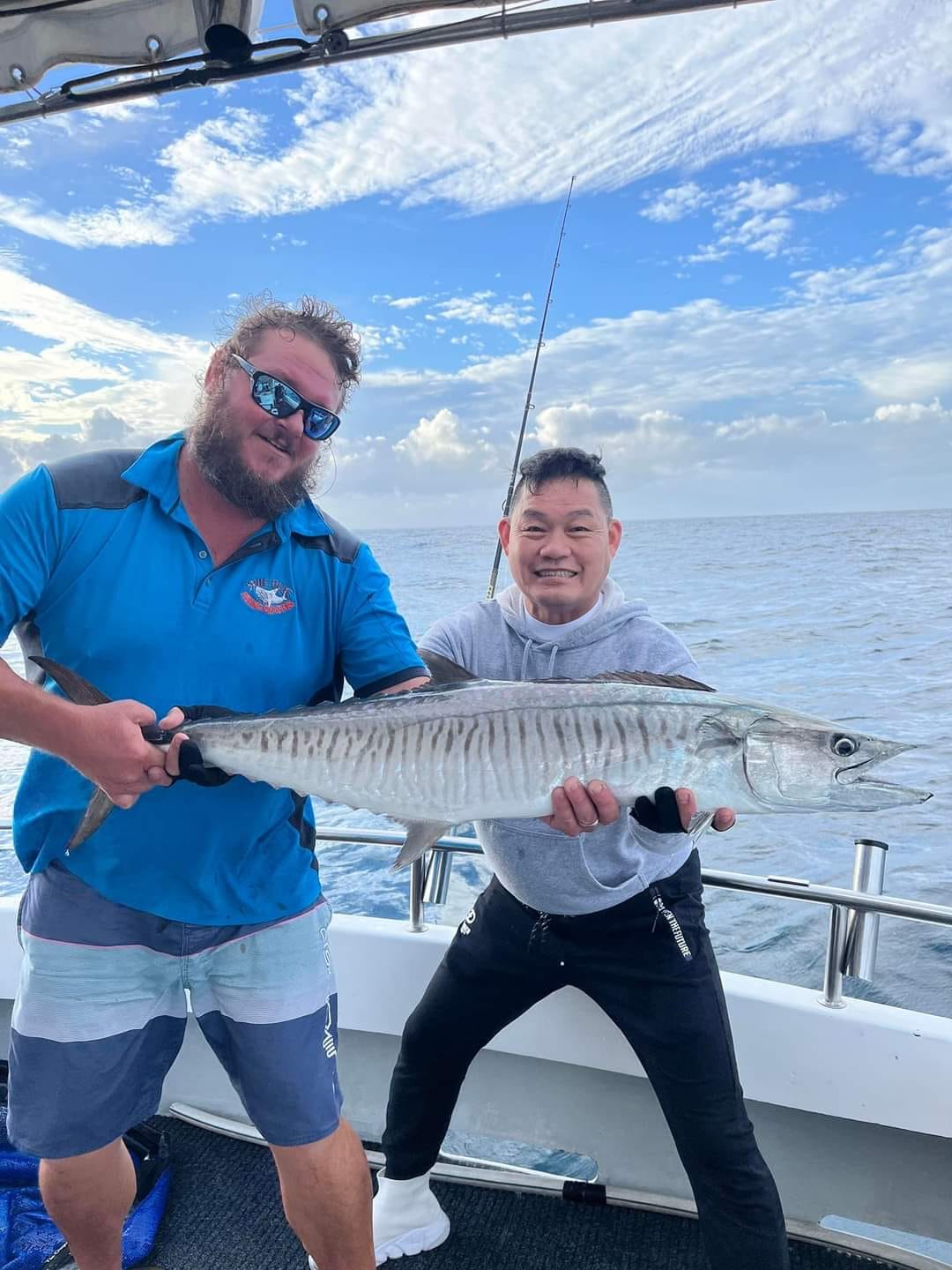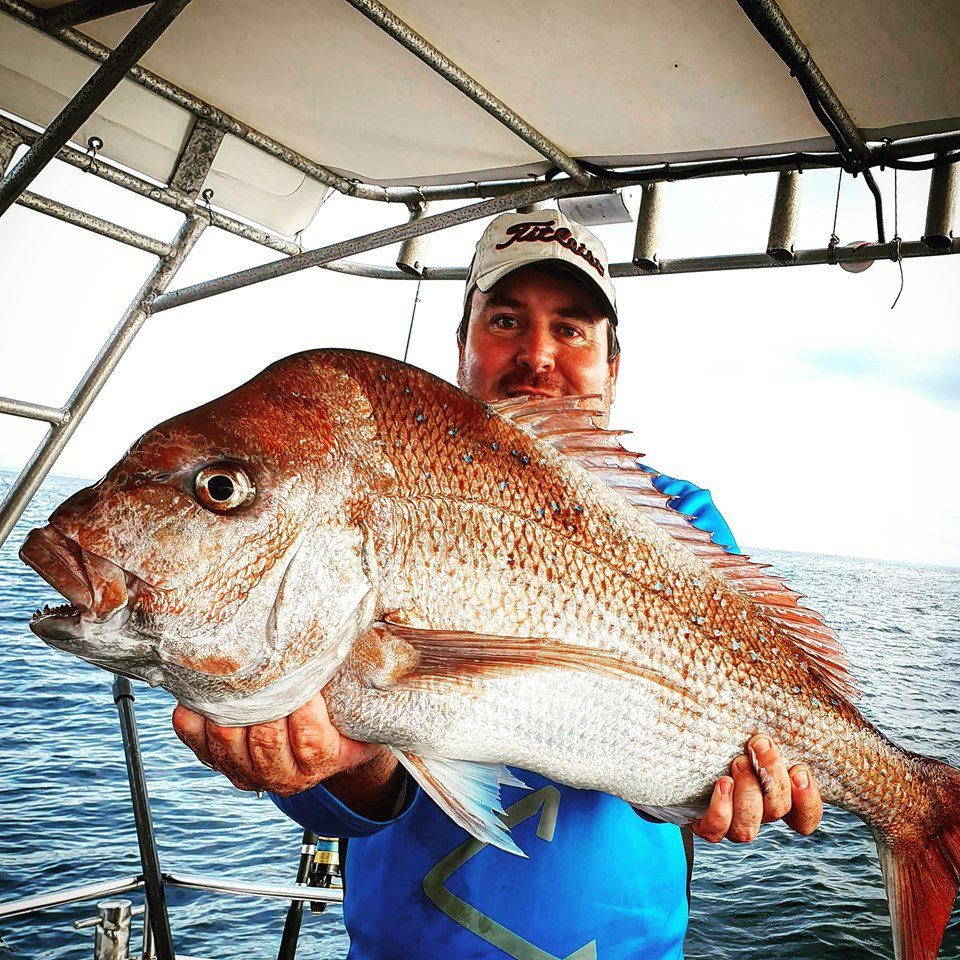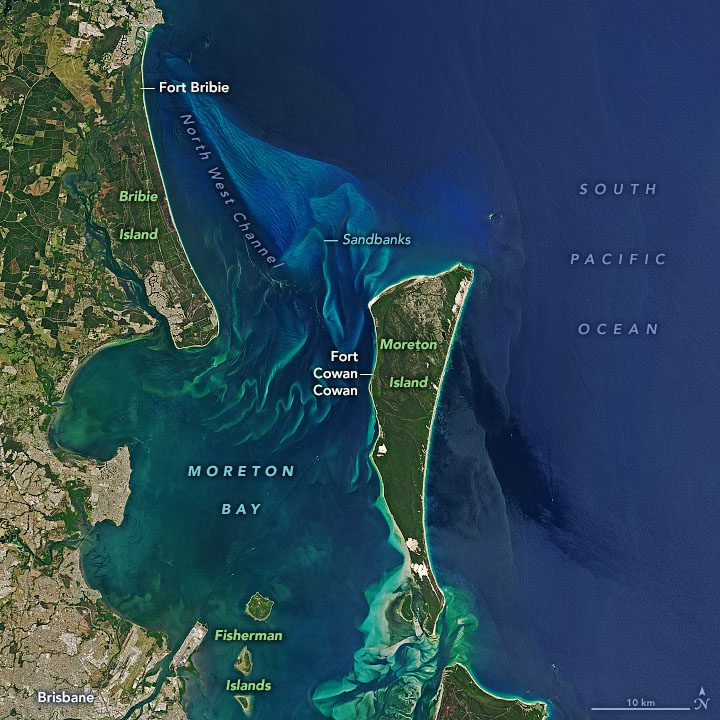How to Catch Cobia – Gold Coast
Cobia/Black kingfish: Rachycentron canadus (Linnaeus)
Want to know how to catch monster Cobia off the Queensland coast. Author Anthony Coughran explains how. Cobia are a frequent visitor to our shores all year round. But mainly thicken up in numbers over the winter months. There is a few reasons why they build up in numbers at this time of the year.Quatro Casino: Ein Muss für jeden Casino-Fan in Österreich
Willkommen bei Quatro Casino – einer der aufregendsten Online-Glücksspielplattformen, die in Österreich für Furore sorgt. Für alle Casino-Enthusiasten in Österreich ist Quatro Casino ein absolutes Muss. Mit einer Vielzahl von Spielen, großzügigen Boni und einer benutzerfreundlichen Plattform bietet Quatro Casino ein unvergleichliches Spielerlebnis, das sowohl Anfänger als auch erfahrene Spieler begeistert.
In diesem Artikel tauchen wir ein in die Welt von Quatro Casino und entdecken, was diesen Anbieter so besonders macht. Von der beeindruckenden Spielauswahl über die spannenden Bonusangebote bis hin zu den Sicherheitsmaßnahmen – wir beleuchten alle Aspekte, die Quatro Casino zu einem Top-Ziel für Glücksspielbegeisterte in Österreich machen. Bereit, die Walzen zu drehen und das Glück herauszufordern? Tauchen wir ein in die aufregende Welt von Quatro Casino und erleben Sie die Spannung und den Nervenkitzel, den dieses Casino zu bieten hat!
Die Geschichte von Quatro Casino: Ein Blick hinter die Kulissen
Quatro Casino ist ein aufregendes Online-Casino, das ein Muss für jeden Casino-Fan in Österreich ist. Mit einer beeindruckenden Auswahl an Spielen, darunter Slots, Tischspiele und Live-Dealer-Spiele, bietet Quatro Casino ein erstklassiges Spielerlebnis. Die benutzerfreundliche Website und die hochwertige Software sorgen für reibungsloses und unterhaltsames Spielen. Darüber hinaus bietet Quatro Casino großzügige Boni und Promotionen, die die Spieler belohnen und ihr Casino-Erlebnis noch aufregender machen.
Wenn Sie ein Casino-Fan in Österreich sind, sollten Sie Quatro Casino auf jeden Fall besuchen. Mit einer Lizenz von der Malta Gaming Authority können Sie sicher sein, dass Sie in einer sicheren und fairen Umgebung spielen. Registrieren Sie sich noch heute auf www.quatroonline247.com und entdecken Sie die aufregende Welt von Quatro Casino mit all ihren spannenden Spielen und lukrativen Angeboten.
Die beliebtesten Spiele bei Quatro Casino: Spannung und Unterhaltung pur
Quatro Casino ist ein aufregendes Online-Casino, das für jeden Casino-Fan in Österreich ein absolutes Muss ist. Mit einer beeindruckenden Auswahl an Spielen, darunter klassische Tischspiele, spannende Slots und lebendige Live-Dealer-Spiele, bietet Quatro Casino ein unvergleichliches Spielerlebnis für alle Geschmäcker.
Neben der Vielfalt an Spielen punktet Quatro Casino auch mit großzügigen Boni und Aktionen, die den Spielern zahlreiche Chancen bieten, ihr Glück zu versuchen und satte Gewinne zu erzielen. Das Casino zeichnet sich zudem durch eine benutzerfreundliche Plattform aus, die es einfach macht, sich zu registrieren, einzuzahlen und sofort mit dem Spielen zu beginnen.
Wenn Sie ein Casino-Fan in Österreich sind und nach einer erstklassigen Online-Spielerfahrung suchen, dann sollten Sie definitiv Quatro Casino einen Besuch abstatten. Mit seiner erstklassigen Spielauswahl, großzügigen Boni und unkomplizierten Plattform ist Quatro Casino die ideale Wahl für alle, die auf der Suche nach Nervenkitzel und Unterhaltung sind.
Quatro Casino Boni und Promotionen: Mehr Chancen auf Gewinne
Quatro Casino ist ein Online-Casino, das sich als ein Muss für jeden Casino-Fan in Österreich etabliert hat. Mit einer beeindruckenden Auswahl an Spielen, darunter beliebte Slots, Tischspiele und Live-Casino-Optionen, bietet Quatro Casino eine erstklassige Spielerfahrung. Die Benutzeroberfläche ist benutzerfreundlich und ansprechend gestaltet, was es einfach macht, sich in die Welt des Glücksspiels einzutauchen.
Neben dem großzügigen Willkommensbonus und laufenden Promotionen zeichnet sich Quatro Casino durch einen zuverlässigen Kundenservice aus, der rund um die Uhr verfügbar ist. Die Sicherheit und Fairness der Spiele stehen im Mittelpunkt, was es den Spielern ermöglicht, sich ganz auf ihr Spielerlebnis zu konzentrieren. Mit einer Lizenzierung durch renommierte Glücksspielbehörden bietet Quatro Casino eine vertrauenswürdige Plattform für Casino-Enthusiasten in Österreich, die nach Unterhaltung und potenziellen Gewinnen suchen.
Kundenservice bei Quatro Casino: Support rund um die Uhr
Quatro Casino ist ein aufregendes Online-Casino, das für jeden Casino-Fan in Österreich ein absolutes Muss ist. Mit einer breiten Auswahl an Spielen und einem attraktiven Willkommensbonus bietet Quatro Casino ein unvergleichliches Spielerlebnis. Die Website ist benutzerfreundlich gestaltet und bietet eine Vielzahl von beliebten Spielen, darunter Slots, Tischspiele und Live-Casino-Spiele.
Ein Highlight von Quatro Casino ist der großzügige Willkommensbonus, der neuen Spielern die Möglichkeit bietet, mit zusätzlichem Guthaben zu spielen. Dieser Bonus ermöglicht es den Spielern, die Vielfalt der Spiele zu erkunden und ihre Gewinnchancen zu erhöhen. Darüber hinaus bietet Quatro Casino regelmäßige Promotionen und Aktionen, die für noch mehr Spannung und Unterhaltung sorgen.
Die Sicherheit und Fairness der Spiele stehen bei Quatro Casino an erster Stelle. Die Website verfügt über eine Lizenz und wird von einer renommierten Glücksspielbehörde reguliert. Spieler können also beruhigt sein, dass ihre Daten geschützt sind und die Spiele fair ablaufen. Der Kundenservice von Quatro Casino ist ebenfalls erstklassig und steht den Spielern rund um die Uhr zur Verfügung.
Insgesamt bietet Quatro Casino ein erstklassiges Spielerlebnis für alle Casino-Fans in Österreich. Mit einer großen Auswahl an Spielen, attraktiven Boni und einem hervorragenden Kundenservice ist Quatro Casino die perfekte Wahl für alle, die auf der Suche nach einem seriösen und unterhaltsamen Online-Casino sind.
Quatro Casino Mobile App: Casino-Spaß jederzeit und überall
Quatro Casino ist ein aufregendes Online-Casino, das sich als absolutes Muss für jeden Casino-Fan in Österreich etabliert hat. Mit einer Vielzahl von hochwertigen Spielen, großzügigen Boni und einer benutzerfreundlichen Plattform bietet Quatro Casino ein erstklassiges Spielerlebnis für alle Glücksspiel-Enthusiasten.
Das Casino bietet eine beeindruckende Auswahl an Spielen, darunter beliebte Spielautomaten, Tischspiele und Live-Casino-Optionen. Mit Software von Microgaming können die Spieler auf eine hohe Qualität und eine Vielzahl von Themen zugreifen, die für stundenlange Unterhaltung sorgen.
Ein weiterer Grund, warum Quatro Casino so beliebt ist, sind die großzügigen Bonusangebote und Promotionen, die regelmäßig angeboten werden. Neue Spieler können von lukrativen Willkommensboni profitieren, während treue Kunden mit verschiedenen Aktionen belohnt werden. Mit einer sicheren und zuverlässigen Spielumgebung ist Quatro Casino die beste Wahl für Casino-Fans in Österreich.
Alles in allem ist Quatro Casino zweifellos ein unverzichtbares Ziel für alle Casino-Enthusiasten in Österreich. Mit seinem umfangreichen Spielangebot, großzügigen Bonusangeboten und einem erstklassigen Kundenservice bietet die Plattform ein unvergleichliches Spielerlebnis. Durch die sichere und vertrauenswürdige Spielumgebung sowie die Möglichkeit, auch mobil zu spielen, erfüllt Quatro Casino die Bedürfnisse aller Spieler. Tauchen Sie ein in die aufregende Welt des Glücksspiels bei Quatro Casino und erleben Sie Nervenkitzel und Unterhaltung auf höchstem Niveau!
- The whale migration.
- The slowing of the currents on our reefs.
- our reef species spawning.
- The annual mullet and tailor run.
- White Bait run.
- Manta ray migration,

How to catch monster Cobia
Cobia habitat and movements
 Big Cobia will sit beside reefs, in crevices and behind reef ledges. “ Like lazy dogs” They do this to conserve energy and to pick off any loose bait that comes their way. These magnificent fish will shadow whales and feed off the protein rich excrement and any bait fish using the whales as cover. In addition Cobia also shadow the manta rays in a similar tradition to the whales. They will sit on and around reefs and structure like wrecks in 5m of water and out to depths of up to 100 metres.
Big Cobia will sit beside reefs, in crevices and behind reef ledges. “ Like lazy dogs” They do this to conserve energy and to pick off any loose bait that comes their way. These magnificent fish will shadow whales and feed off the protein rich excrement and any bait fish using the whales as cover. In addition Cobia also shadow the manta rays in a similar tradition to the whales. They will sit on and around reefs and structure like wrecks in 5m of water and out to depths of up to 100 metres.
Cobia Size and bag limits
* A size limit of 75cm and bag of 2 for Qld. * No size limit and a bag limit of 5 for NSW.Distribution, where and how to catch Cobia
Cobia can be found from Fremantle in WA right around the top end and back down the east coast in Qld and northern NSW.The best time to catch a cobia
From the start of May to November. But you will still get the odd one through the warmer months too.
Best places to catch a Cobia
Most local reefs around the 18 and 24 fathom mark that hold bait and good number of small reef fish. Furthermore ledges, shale next to reefs, wrecks, man made structures, reefs with high populations of crabs/crustaceans and Around large bouys and FADs as well.Best baits
Live baits are definitely the best baits you can use on Cobia. Yakka’s, pike, slimies, mullet, tailor, squid or cuttlefish, crabs, small Bonnie’s and even small squire and bream. They will also hit a wide range of dead baits as well. Butterflied, large strip baits, whole fillets, whole squid, prawns and combos all work well too.
Best set ups to chase Cobia
- Live bait set ups: Lines 30lb – 80lb braid or mono to 60lb – 150lb leader on a 40lb – 100lb rod with a 6000 – 12000 reel.
- Artificial set ups: 30lb – 60lb mono or braid with 40lb – 100lb leader. A 30lb – 100lb rod with a 5000 – 12000 reel.
Live bait rigs
 60lb to 100lb leader with a running pea sinker to a double hook snell rig is perfect for Cobia. The small sinker will keep the live baits head down. Sinker weight will depend on current and wind. But smaller the better. This Allows your bait to drift to the bottom in a more natural state. But allows more time in the water column getting to the bottom. Which in turn means more hook ups. Fishing an open bail arm will help you keep in contact with the bottom. However there’s a fine line between drifting a foot above the bottom and being in the Reef. A down rigger will help you get your live baits in the strike zone and is a handy tool for trolling reefs to cover more ground and find the fish.
60lb to 100lb leader with a running pea sinker to a double hook snell rig is perfect for Cobia. The small sinker will keep the live baits head down. Sinker weight will depend on current and wind. But smaller the better. This Allows your bait to drift to the bottom in a more natural state. But allows more time in the water column getting to the bottom. Which in turn means more hook ups. Fishing an open bail arm will help you keep in contact with the bottom. However there’s a fine line between drifting a foot above the bottom and being in the Reef. A down rigger will help you get your live baits in the strike zone and is a handy tool for trolling reefs to cover more ground and find the fish.
Anchor and Drift Fishing
You can use a similar rig to your live bait rigs for drift baits. A small pea sinker to a double hook or single hook. Allows your baits to drift along the bottom nicely.Soft Plastics
Still one of the best ways to catch Cobia on the Gold coasts close reefs. For reefs offshore, a 3/4 – 2 ounce jig head couples with 3- 9inch plastics are the go. Coupled with 30lb- 80lb leader. Jerk shads , grubs, wrigglers, paddle tails all work well on Cobia. Colour depends on the day. But bright colours at dusk and dawn and natural colours once the sun is established. Squid and crab plastics also work really well.
, grubs, wrigglers, paddle tails all work well on Cobia. Colour depends on the day. But bright colours at dusk and dawn and natural colours once the sun is established. Squid and crab plastics also work really well.
Micro jigs
Micro jigs also work well Cobia. 20g to 300g jigs work well. Colour and weight depends on the day. Slow pitch, flat blat and flutter jigs work the best.Fish preservation and cleaning
 When caught Firstly you want to bleed you fish as it will let all the blood out of the muscles and flesh. A quick slice of the gill lining. Secondly a brain spike and straight onto ice or into an ice slurry will keep your catch in the best eating condition. In fact Cobia are a great eating fish. the flesh is very nice crumbed, deep fried, pan fried, baked or steamed, in a salad or on a sandwich. Just add a few herbs, spices, lemon and garlic or what ever floats your boat and get into them.
Cobia also go by the names of blackie, black king and crab eater.
There is a lot of different species of fish in our waters. So having a fish ID app, fish ID books like Grants guide to fish or a fish almanac will help you identify the species you have caught. Which mean there will be no confusion when you get back in or with dpi. Or you can ask us. But if you are unsure take a pic and throw it back. You can always ask us when your back in. It’s not worth it if you don’t know what it is.
If you would like any additional information on chasing these hard fighting brutes, drop us a line we will help you out. For Gold coast fishing charters bookings click here. On behalf of The team at FFGC and True Blue fishing charters we wish everybody safe travels and fishing fun. Thanks AntFFGC.
When caught Firstly you want to bleed you fish as it will let all the blood out of the muscles and flesh. A quick slice of the gill lining. Secondly a brain spike and straight onto ice or into an ice slurry will keep your catch in the best eating condition. In fact Cobia are a great eating fish. the flesh is very nice crumbed, deep fried, pan fried, baked or steamed, in a salad or on a sandwich. Just add a few herbs, spices, lemon and garlic or what ever floats your boat and get into them.
Cobia also go by the names of blackie, black king and crab eater.
There is a lot of different species of fish in our waters. So having a fish ID app, fish ID books like Grants guide to fish or a fish almanac will help you identify the species you have caught. Which mean there will be no confusion when you get back in or with dpi. Or you can ask us. But if you are unsure take a pic and throw it back. You can always ask us when your back in. It’s not worth it if you don’t know what it is.
If you would like any additional information on chasing these hard fighting brutes, drop us a line we will help you out. For Gold coast fishing charters bookings click here. On behalf of The team at FFGC and True Blue fishing charters we wish everybody safe travels and fishing fun. Thanks AntFFGC.

